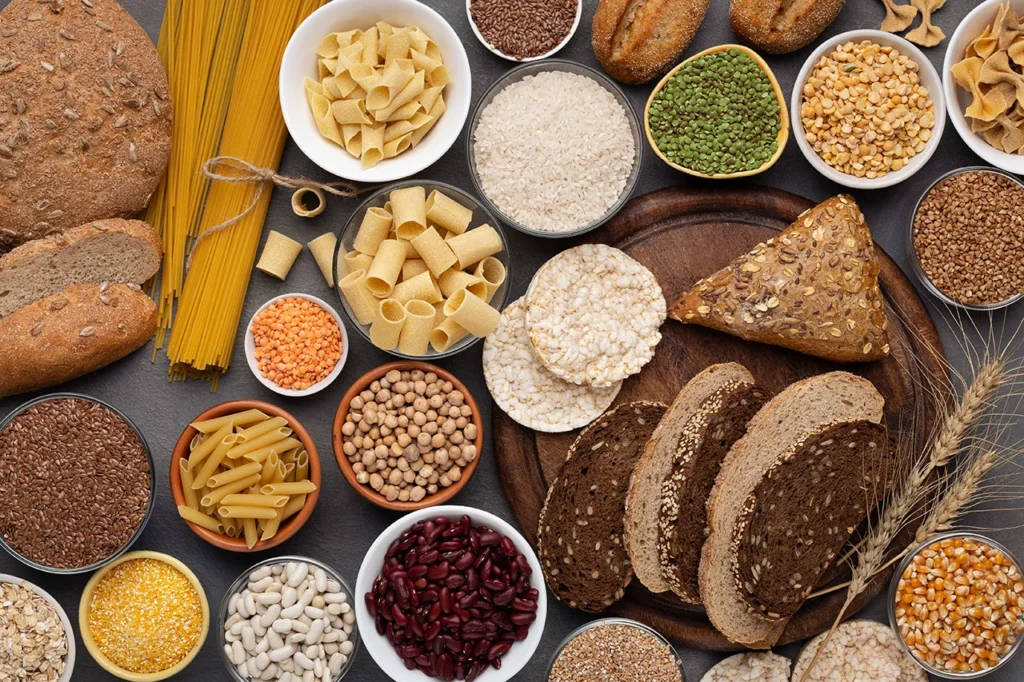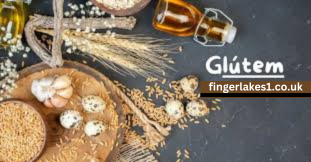Glútem often makes headlines, doesn’t it? Sometimes praised, other times vilified—what’s the real scoop on this ubiquitous protein? Let’s embark on a detailed exploration of gluten, its impacts on health, and how it fits into various diets.
What is Glútem, Really?
Glútem is a protein found largely in wheat, barley, and rye. Think of it as the glue that holds food together; it gives bread its fluffy structure and pasta its firmness. But for some, gluten is not just a culinary delight—it’s a source of health issues.
A Deep Dive into Glútem from a Health Perspective
Understanding Glútem impact on health is crucial, especially for those considering a gluten-free lifestyle. Gluten itself is harmless to most people, but for those with certain conditions, it can be a real adversary.
The Role of Glútem in Food: Beyond Texture
When it comes to baking a perfect loaf of bread or crafting a delicious pasta dish, gluten is the unsung hero. Its unique properties transform the texture and integrity of many of our favorite foods. Let’s dive into why gluten is so crucial in culinary arts, focusing on its role in elasticity, its function as a binding agent, and its influence on texture and mouthfeel.
Glútem : The Magic Behind Elasticity and Chewiness
Have you ever wondered what gives bread that perfect chewy texture or allows pizza dough to stretch without tearing? That’s gluten at work! Gluten, a protein found in wheat, barley, and rye, becomes activated and elastic when mixed with water and kneaded. This elasticity allows dough to capture air bubbles during the rising process, leading to that airy, chewy goodness we all love in baked goods. Without gluten, breads and other baked items would be flat and crumbly—hardly the appetizing textures we crave!
Glútem as a Binding Agent: Holding Everything Together
Gluten’s role doesn’t stop at making foods chewy; it’s also a critical binding agent. In recipes where ingredients need to stick together, gluten is pivotal. Think about meatballs or veggie burgers: gluten is often a key ingredient in these recipes to help them hold their shape and stay together during cooking. This binding capability makes gluten a favorite among chefs for creating a variety of cohesive dishes that might otherwise fall apart.
Enhancing Texture and Mouthfeel
The impact of gluten extends beyond structure to how food feels in your mouth—its mouthfeel. Gluten contributes to the palatable experience of foods by providing a desirable texture. For instance, a perfectly baked cake has a tender crumb that gluten helps to achieve. Even beyond baked goods, gluten-containing ingredients often find their way into sauces and soups as thickeners, enhancing the overall sensory experience of dishes by improving their texture.
Health Implications of Glútem
For the majority, gluten is perfectly fine, but for others, it can trigger significant health problems:
- Celiac Infection: An autoimmune disorder where gluten use injuries the small intestine.
- Non-Celiac Gluten Sensitivity (NCGS): Symptoms similar to celiac disease but without the intestinal damage.
- Wheat Allergy: An allergic reaction to proteins found in wheat, including gluten.
Meals to Prevent on a Glútem -Free Diet
If you’re navigating a gluten-free lifestyle, say goodbye to traditional breads, pastas, and many processed foods. Gluten hides in many places, so reading labels becomes your new habit.
Here’s a quick rundown of the usual suspects that contain gluten:
- Breads and Pastries: The most obvious culprits, including anything made from traditional wheat, barley, or rye flours.
- Pasta: Regular pasta is a gluten hotspot, but thankfully, there are many alternatives.
- Cereals: Several morning meal cereals include wheat or barley malt.
- Sauces and Gravies: Wheat flour is a common thickener in these products.
- Beer: Traditional beer is brewed from barley, a gluten-containing grain.
- Processed Meats: Some sausages, hot dogs, and deli meats use gluten as a binder.
- Snack Foods: Pretzels, crackers, and many other packaged snacks are made with wheat flour.
Living Glútem -Free: It’s Not Just About Food
Living gluten-free affects more than just your diet. It influences social interactions, dining out, and even your choice of cosmetics.
Glútem -Free Alternatives: Exploring New Horizons

Thankfully, the rise of gluten-free diets has led to a surge in available alternatives. From almond flour to quinoa, these options help keep meals interesting and nutritious.
Fear not, for the gluten-free world is full of tasty and nutritious substitutes that can help you maintain a diverse and enjoyable diet:
- Gluten-Free Grains: Quinoa, rice, buckwheat, and millet are not only gluten-free but are packed with nutrients.
- Gluten-Free Pasta: Options made from rice, corn, quinoa, or legumes offer the pasta experience without the gluten.
- Gluten-Free Flours: Almond flour, coconut flour, and chickpea flour are great for baking and cooking.
- Corn and Rice Cereals: These make for great breakfast options. Just ensure they’re labeled gluten-free to avoid cross-contamination.
- Gluten-Free Breads: Many brands now offer breads made from gluten-free grains that mimic the texture and taste of traditional bread.
- Tamari: A gluten-free alternative to soy sauce, tamari can be used in Asian cooking and sauces without worry.
- Cider, Wine, and Gluten-Free Beers: These are safe beverage choices that don’t compromise on flavor.
Tips for Managing a Glútem -Free Diet
Managing a gluten-free diet can be tricky at first, but with a few tips, you can make it a seamless part of your life:
- Learn to read labels meticulously.
- Explore gluten-free grains like buckwheat and amaranth.
- Get creative with gluten-free recipes.
Sample Glútem -Free Meal Plan
Kickstarting a gluten-free diet? Here’s a simple day’s meal plan:
- Breakfast: Gluten-free oatmeal topped with fresh berries and honey.
- Meal: Quinoa salad with chickpeas, cucumbers, and a lemon-tahini dressing.
- Dinner: Grilled chicken with roasted gluten-free vegetables and a side of rice.
Helpful Tips for Every Glútem -Free Dieter
- Always check for cross-contamination, even in seemingly safe foods.
- When in doubt, choose whole, unprocessed foods.
The Science Behind Glútem -Free Diets
While some opt for gluten-free diets for medical reasons, others find they simply feel better without gluten. Research is ongoing, but the benefits for non-sensitive individuals remain debated.
Educate Yourself on Glútem -Containing Foods
Knowledge is power—understanding which foods contain gluten can help you make informed dietary choices.
Conclusion: The Glútem -Free Journey
Whether you’re considering a gluten-free lifestyle for health reasons or personal preference, it’s a journey of discovery. What will your gluten-free story look like?
Are you thinking of going gluten-free, or have you already started your journey? What’s been the largest problem or surprise for you? Fingerlakes1 is a platform where you read all health related article we try to best we help our reader to provide best and updated information.


